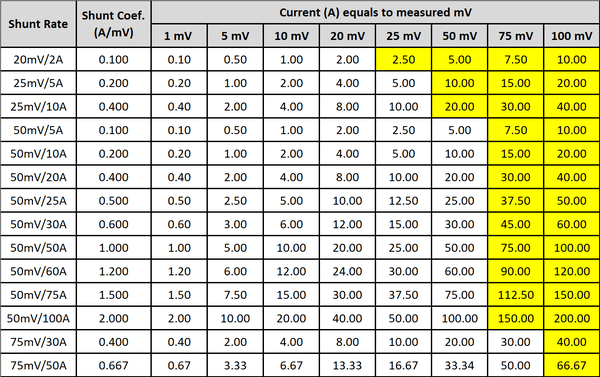
CCPTools has a user-friendly shunt conversion calculator. The shunt is an electrical resistor used for measuring current. A simple component, it can be permanently installed in the current path. As a result, there is no need to open the circuit to take measurements. A simple multimeter with millivolt resolution is sufficient for the typical industrial range of shunts. Moreover, the shunt is often cheaper than a zero-resistance ammeter. Although selecting the correct shunt size is not always easy or feasible, it leads to more accurate current measurement.
The main concept of the shunt conversion calculator is based on Ohm’s law, V=IR. Ohm’s law uses the fixed and known RESISTANCE value as a coefficient. Therefore, increasing the voltage drop across the shunt means increasing the passing current. Below is a list of some available shunts in the cathodic protection market, as well as the translation of some measured mV to the circuit’s passing current. If you expect to measure the value in the yellow cells in the table, it is best to consult with the shunt supplier or producer.

References
You can download CCPTools to calculate the direct current by measuring the potential on the shunt.